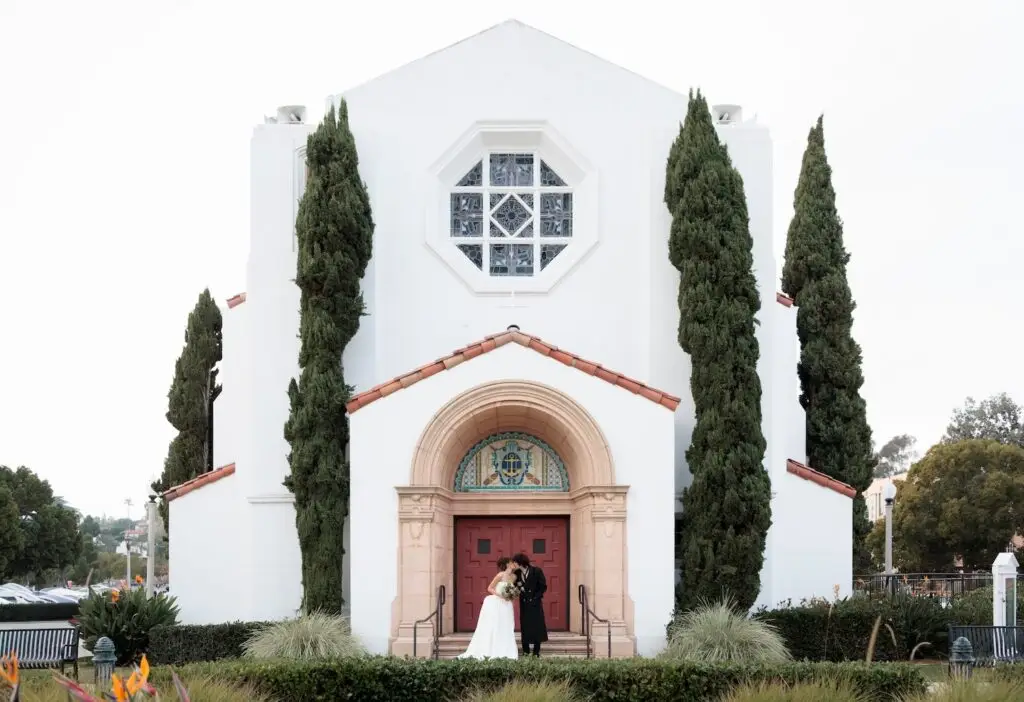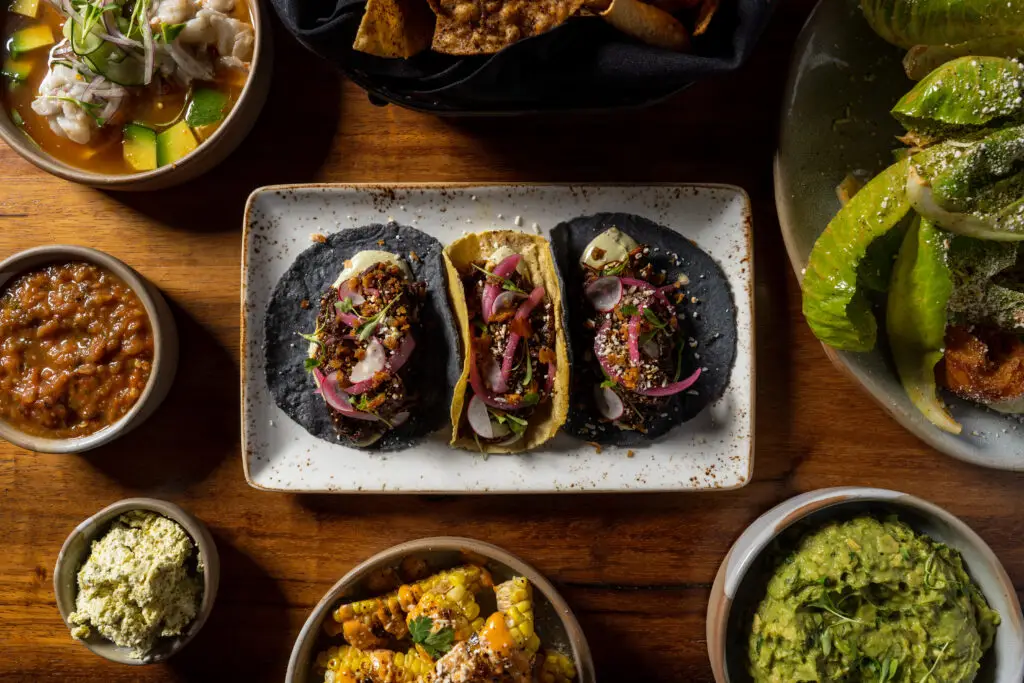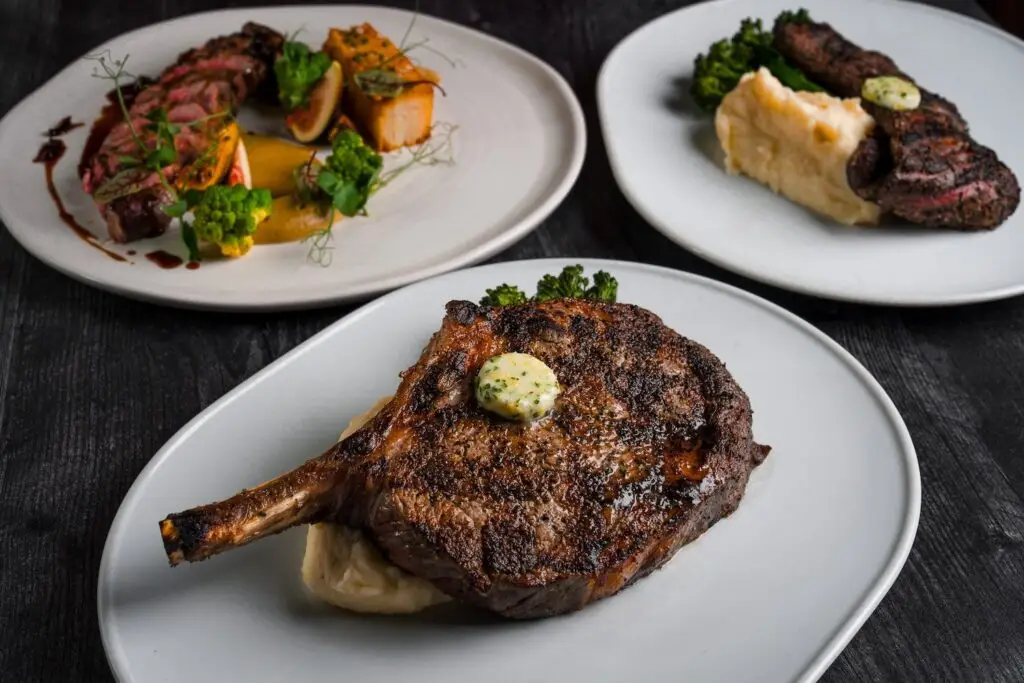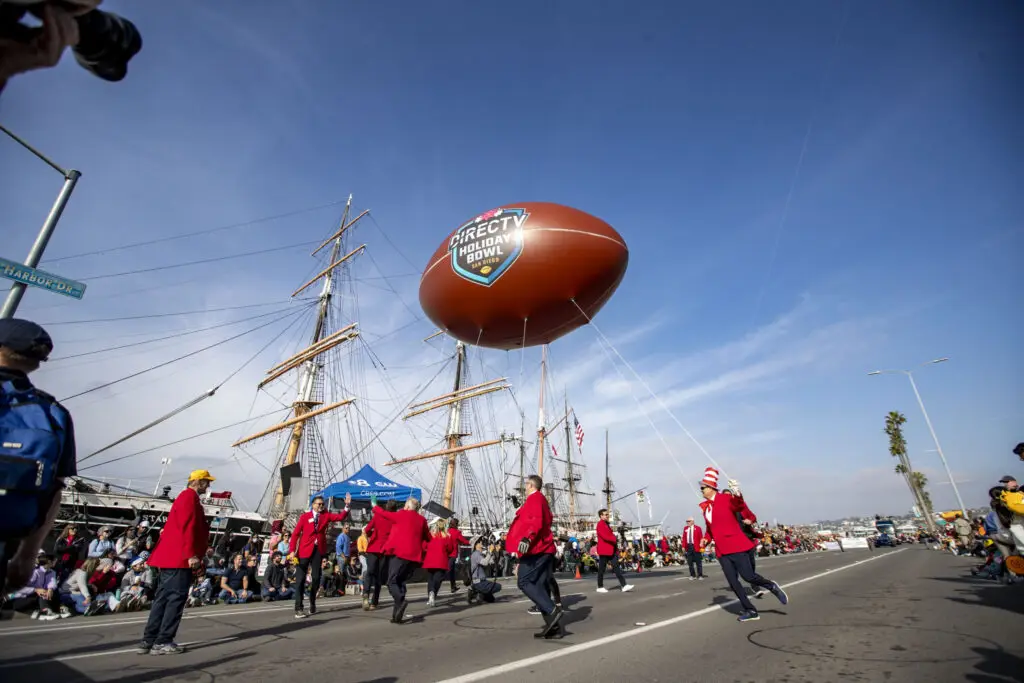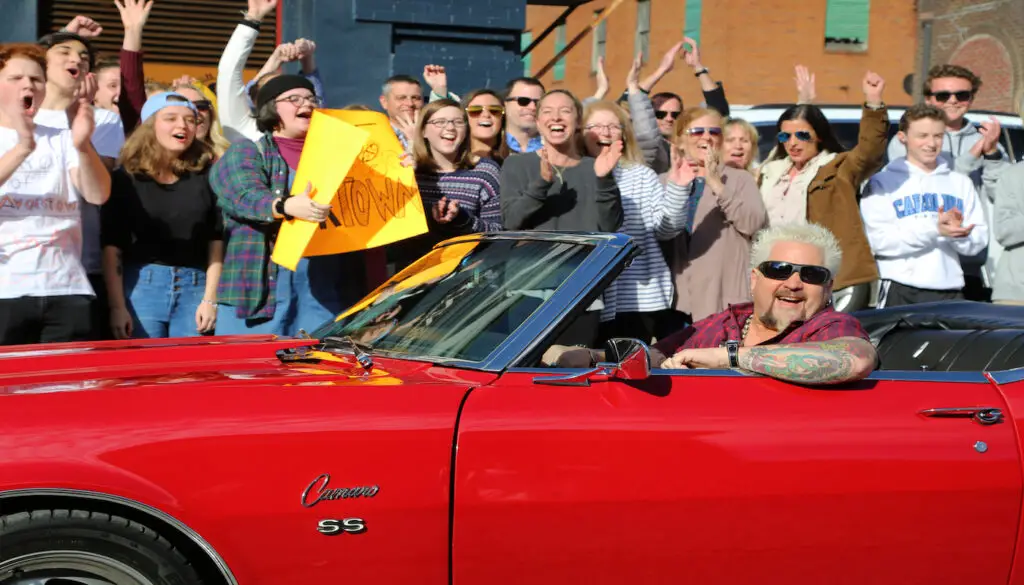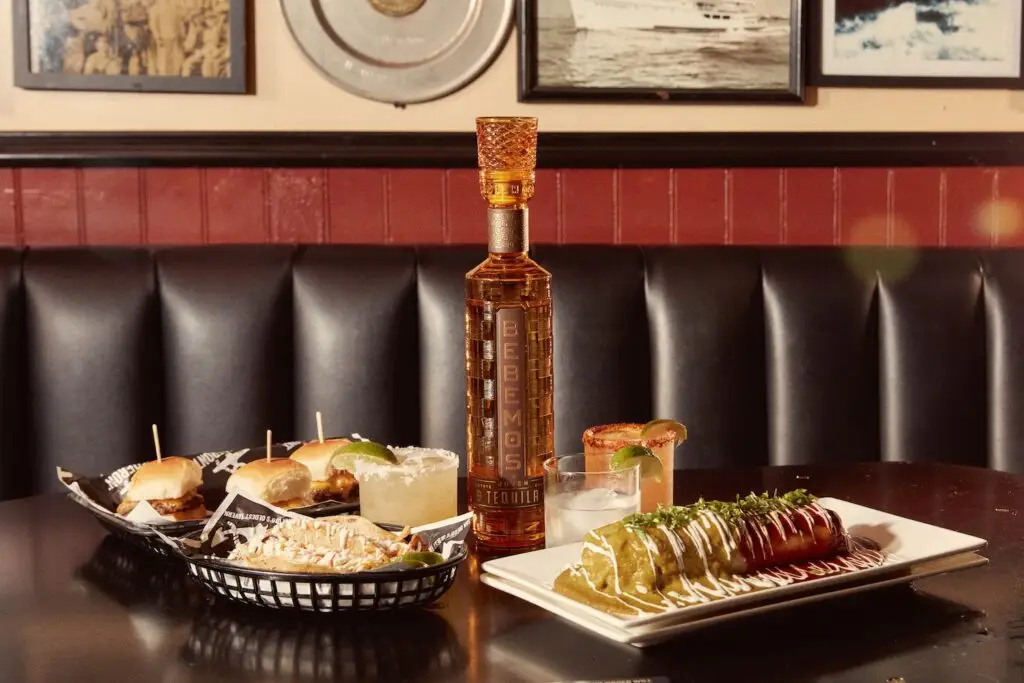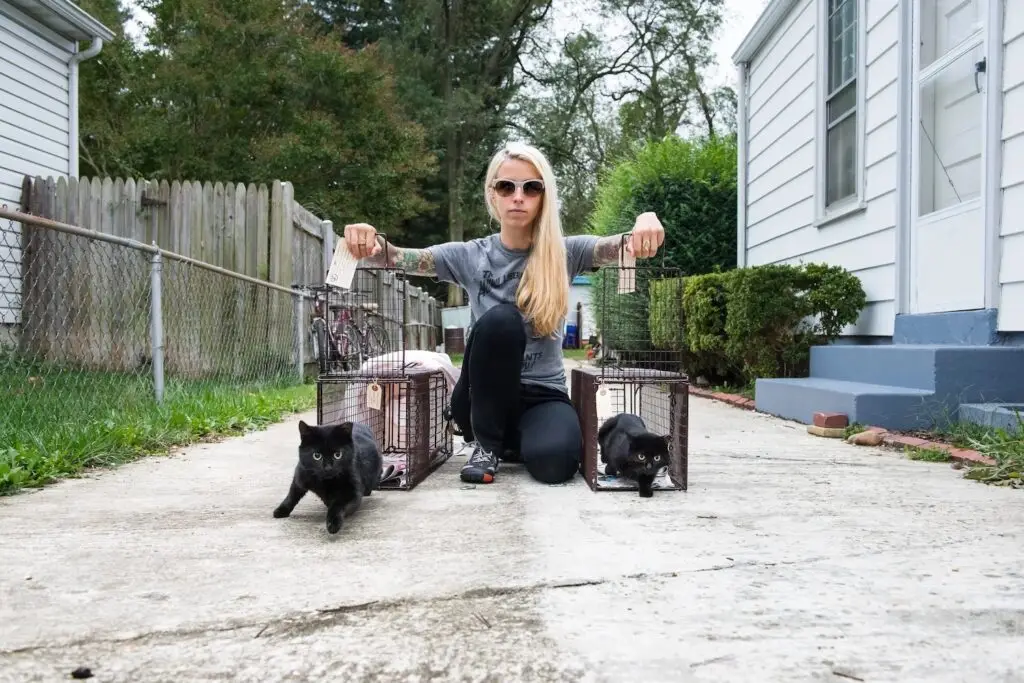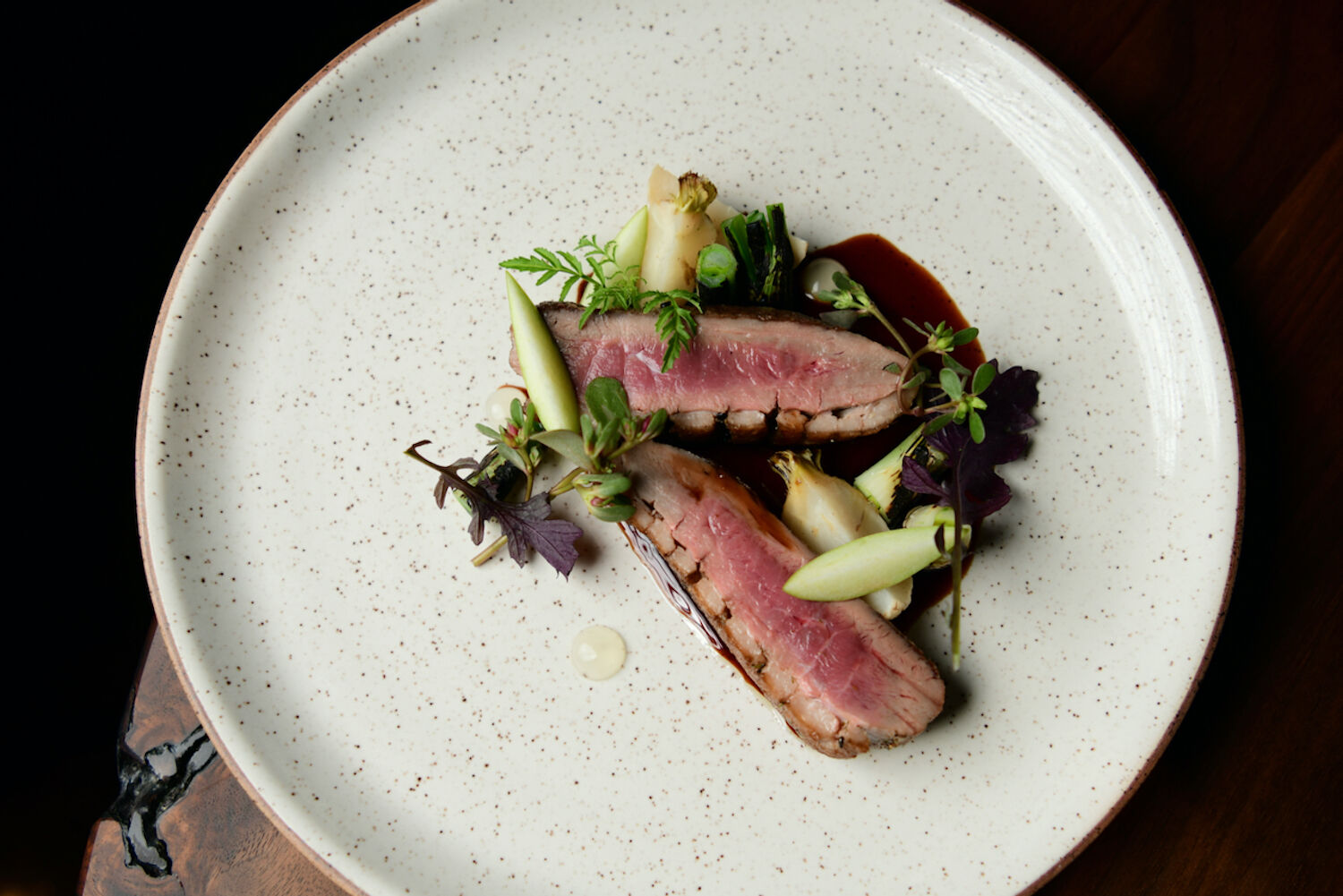
At Matsu, the duck is marinated in shio koji, the famous funky-sweet Japanese marinade from fermented grains
Leo Cabal
Oceanside is boiling. The long-simmering renaissance of San Diego’s northernmost coastal city has reached full go. Amid the burble and pop of its new projects and crowds, Matsu serves as an escape room. There are no windows. Well, there’s one. Over it, a thick black fabric shade is pulled tight. For this project from chef William Eick, sunshine and distractions have been actively disinvited. The only lights in the dining room are 14 gentle spotlights on 14 custom wooden tables. Walls are painted black. The main art is a single white orchid, some bonsai trees being meticulous in the shadows. Matsu is a minimalist dedication to Japanese culture and cuisine.
Despite the absolute indoors of the restaurant, it doesn’t feel claustrophobic or hermetic. It feels focused, almost monastic, as if one of the menu options might be lifelong celibacy.
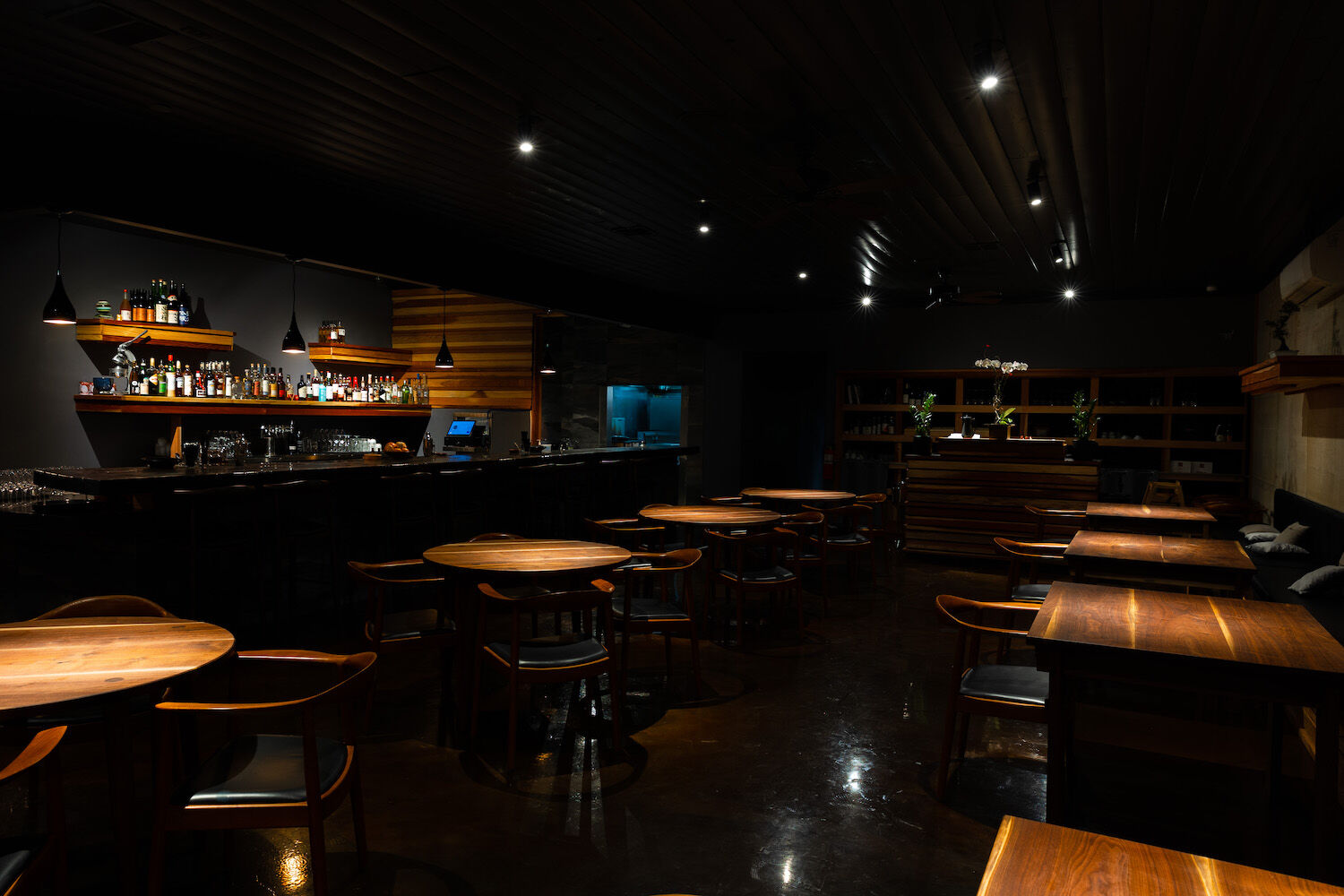
The absolute indoors interior of Matsu in Oceanside
Leo Cabal
Eick opened this dream project six months ago. For years, he’s been one of those chefs other chefs point to and say, “Have you tasted what this kid is doing”? Eick is not a kid anymore. He’s very direct about his intention: He is chasing a Michelin star.
Under each spotlight, diners eat eight- or 10-course tasting menus, optionally paired with sakes and wines from Joe Devlin, who studied wines for years under renowned restaurateur Bertrand Hug (Mister A’s, Mille Fleurs). Eick’s right-hand chef is David Duarte, who’s worked in Michelin kitchens (Il Buco, Don Alfonso 1890, Locanda Locatelli, Hedone). “William called me the day before his open,” says Duarte. “I packed everything I owned into my car and drove out from Arizona.”
It’s in the cabbage dish that you see Eick’s special set of skills. A single humble ingredient made remarkable. Eick says this dish—and everything at Matsu—is a study of balance and depth. About tying his fascination with Japanese culture and cuisine to the soil here.
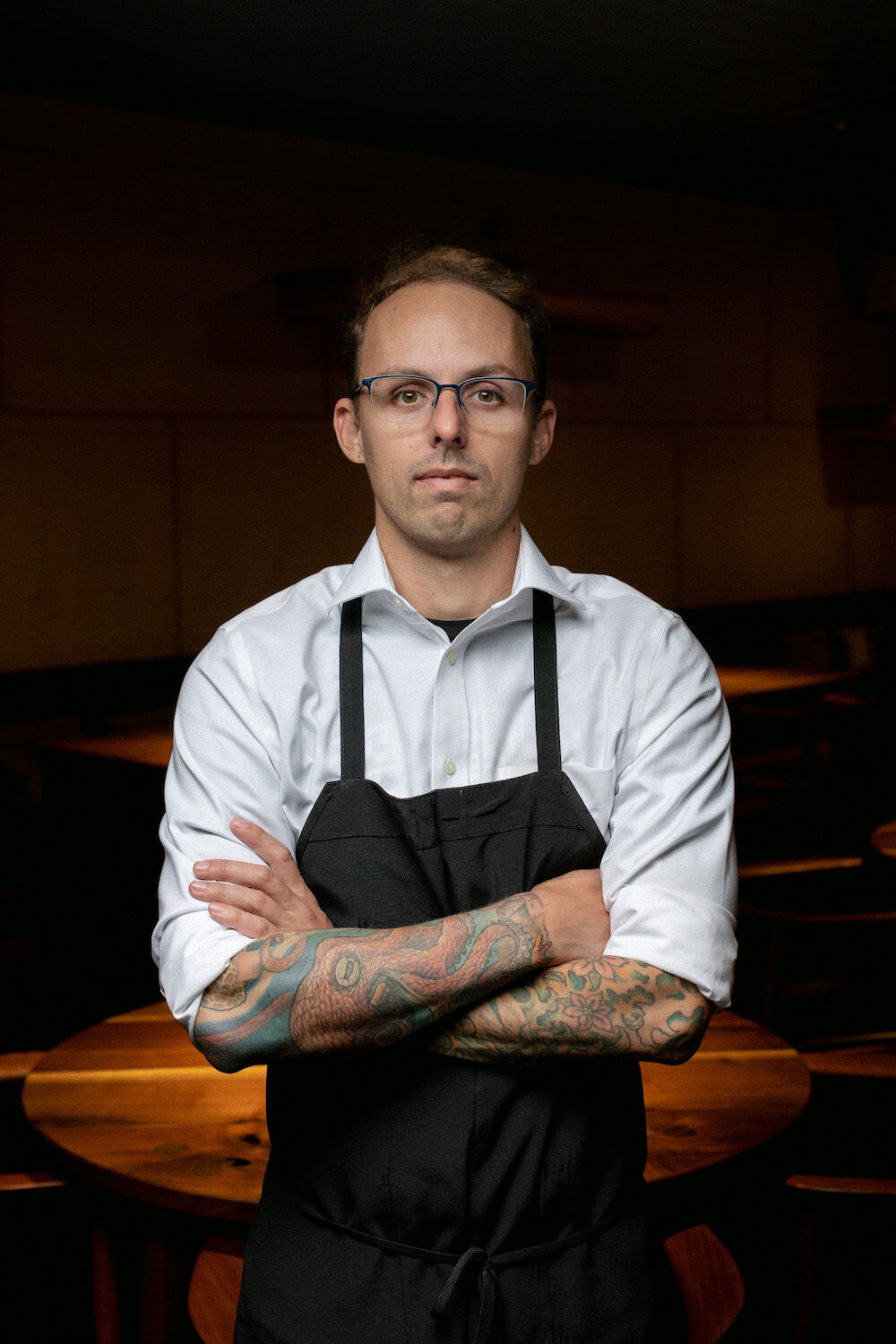
Chef William Eick
Leo Cabal
“Matsu is minimalist in its food and design,” says Eick. “Simple, direct, nothing to hide behind. We have what we need, and nothing more.”
When friends ask, this is what I’d tell them is the perfect order at Matsu, with notes from Eick on what makes them sing:
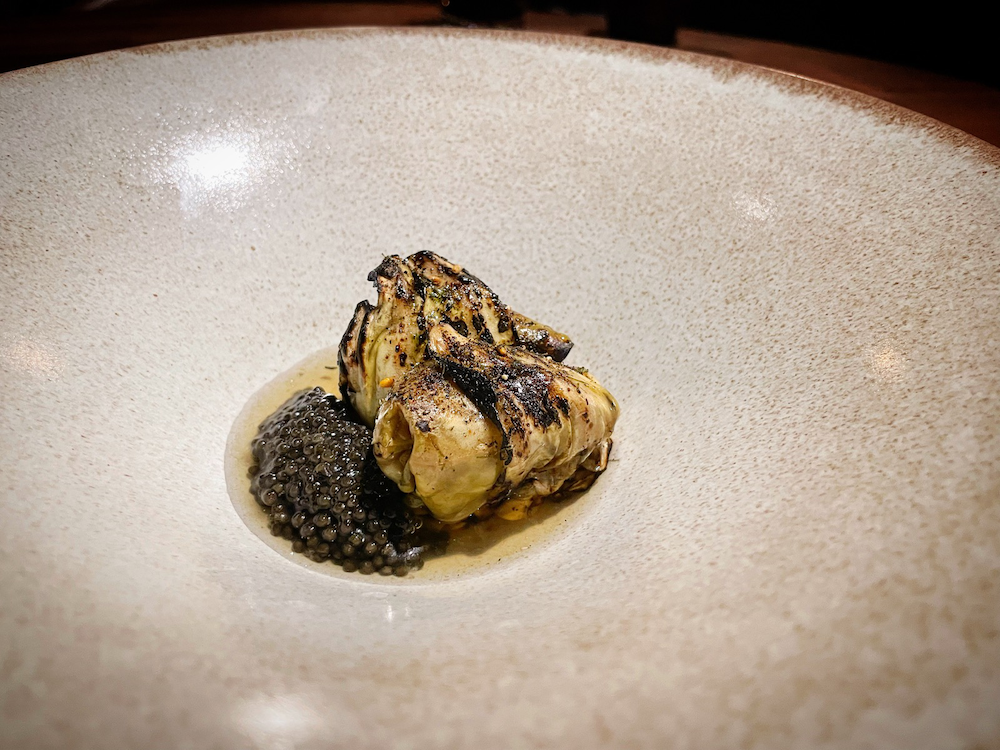
Matsu – Cabbage
Leo Cabal
The Cabbage
Yeah, cabbage. Denigrated in most forms except as a texture for fish tacos or a vessel for fermented spice in kimchi. It does not have a fancy name like kohlrabi, so you don’t expect much right up until the second your mind is blown. It’s like making an Oscars dress out of khaki pants. Eick explains the transformation: “We take the whole cabbage, remove the outer leaves, and juice the inside. We reserve the pulp from juicing, sauté it, and stuff it back into the outer leaves that’ve been grilled, forming a 100-percent cabbage gyoza. We then take the juice, heat up to a certain temperature to break the chlorophyll and clarify the cabbage juice. Kombu and fresh herbs get steeping in, then strained out. The dish gets finished by further charring the cabbage gyoza on our grill, dressed with sesame oil, and togarashi. It’s served with caviar, and the cabbage dashi is poured tableside to create a cabbage gyoza and caviar soup.”
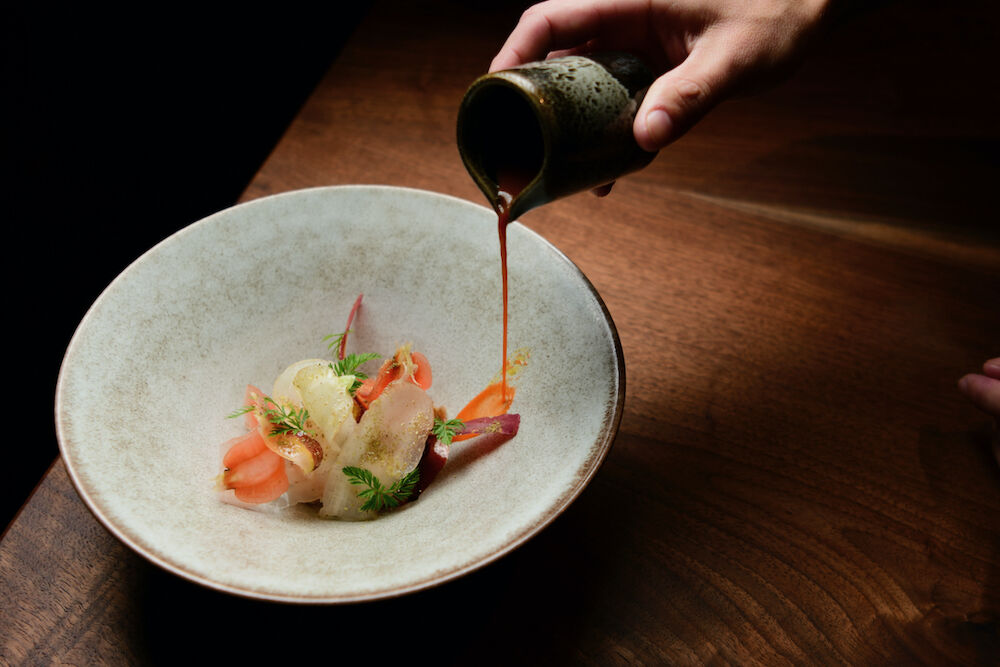
Matsu – Crab and Carrot
Leo Cabal
The Crab
Chilean rock crab is marinated in shio koji (the amazing funky-sweet Japanese marinade, made with fermented grains), then dressed in persimmon vinegar and sesame oil, piled with in-season carrots in various forms (roasted, shaved raw). The dashi (essentially Japanese broth, the soul of the cuisine) is made by simmering carrot juice with A5 wagyu beef trimmings. That alone in a paper cup would be good enough. The entire dish is dressed with a roasted garlic-chili-nasturtium oil, then dusted with sansho peppers. Sansho—a Japanese peppercorn, cousin of Szechuan peppers—numbs you a bit. You are now prepared for light surgery. The server has to explain this to everyone ahead of time so they don’t freak out and think something has gone medically wrong in the middle of a very good dinner. This is the kind of place where most people go on special occasion. Croaking in the middle of it would be even more unfortunate than croaking over, say, a bologna sandwich.
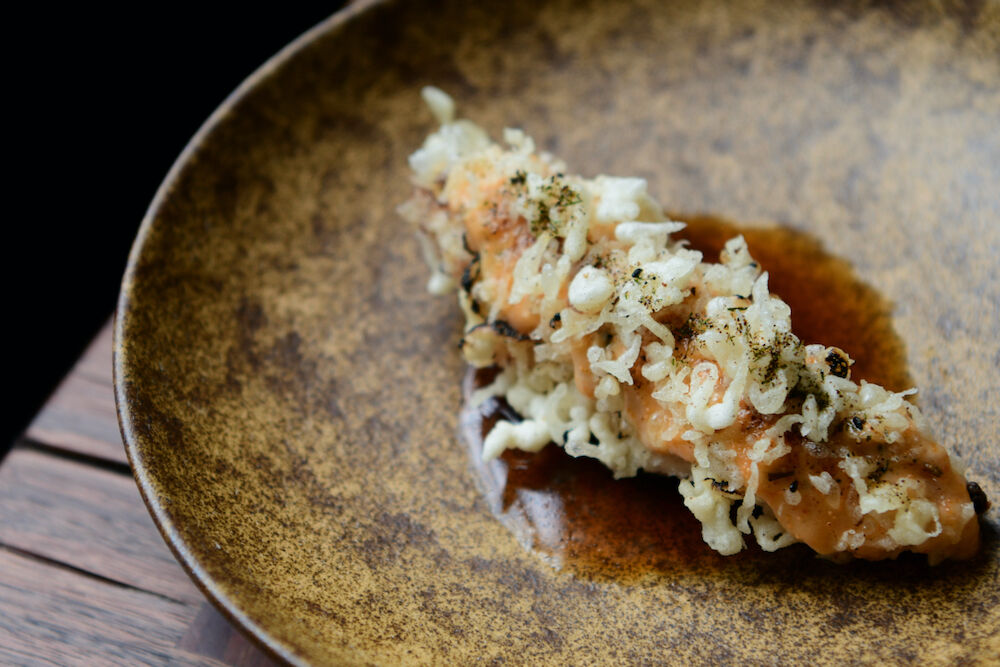
Matsu – Ebi
Leo Cabal
The Ebi (Shrimp)
We’ve all seen or had a version of this dish at every sushi joint we’ve ever been to—tempura fried shrimp. But Eick’s is incredible, thanks to the seasoning on the tempura, and brûléed dynamite sauce.
Eick: “Our house tempura batter is much more on the traditional side, so no leaveners (baking soda/powder), no egg, no bubbles. Just flour, potato starch, and water. It’s all technique from there. After it’s fried, we brûlée dynamite sauce, then cover that with the tenkasu (leftover tempura flakes). It gets dressed with sesame oil and togarashi (most high-end tempura shops in Japan will blend their frying oil to provide more flavor, most using a small amount of sesame). It gets finished with tentsuyu, the traditional tempura dipping sauce. However, we use shrimp dashi made with the shells of the shrimp to fortify the flavor.”
The Duck
This shows off the flavor ratchet that is shio koji, the famous funky-sweet Japanese marinade from fermented grains. Maple Leaf Farms duck breast (pictured above) is brined and marinated in shio koji, then grilled and glazed with duck matsuyaki. Eick: “Matsuyaki is, more or less, our version of teriyaki, although we leave out any starch thickeners. The base is double-brewed shoyu, Okinawan brown sugar, and duck bones. Then roasted turnips, grilled green onion bottoms (the white parts), sudachi gel (Japanese citrus), and seasonal fruit. That day was kumquats, although the last few weeks it’s typically been an apple. Garnishes change daily, but typically some type of mustard green is used. This dish is the first that was developed for Matsu, back in its pop-up phase. It has slowly evolved to what it is now, but otherwise is a staple signature dish.”
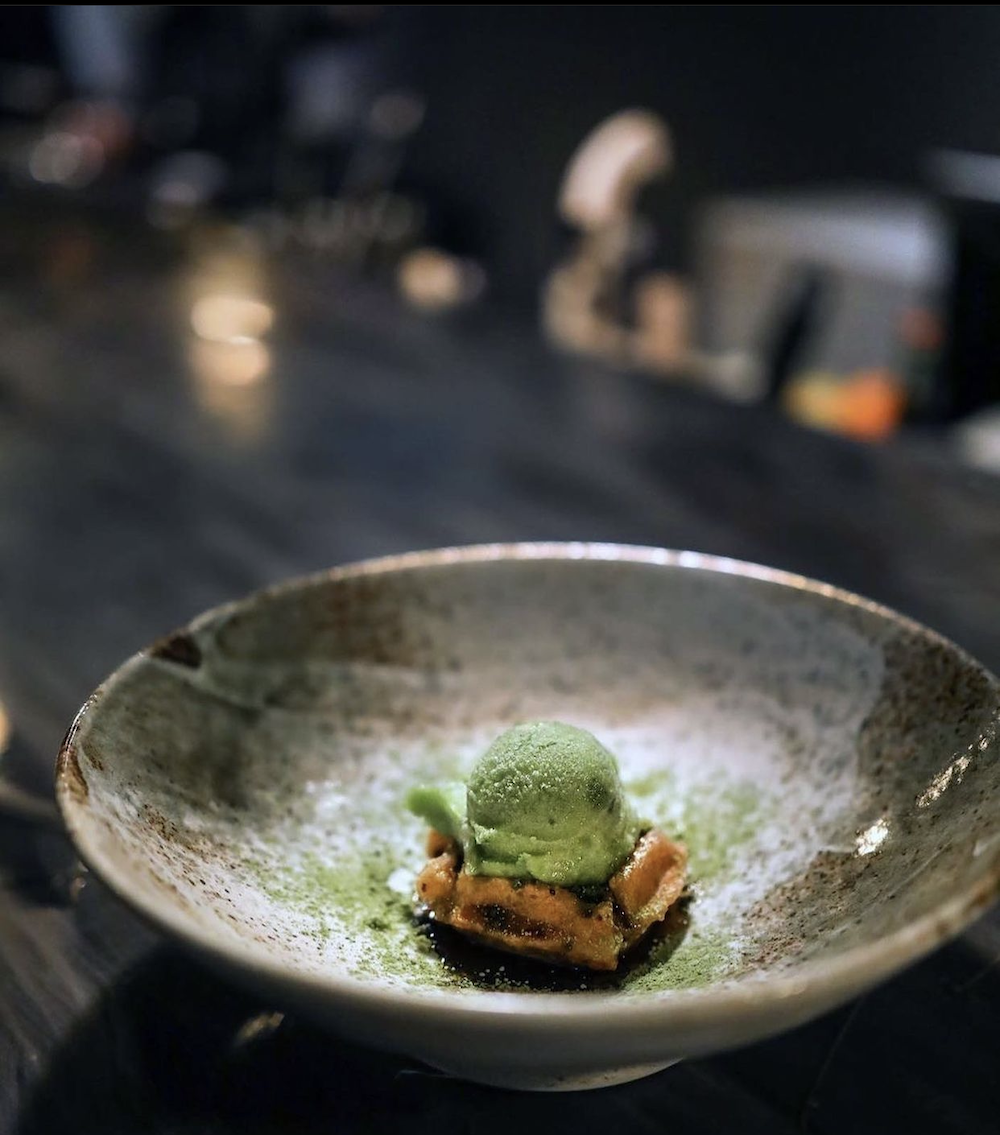
Matsu – Moffle
Leo Cabal
The Moffle
A mochi waffle. Mochi is that alien chewy-smooth texture achieved by using gluten-heavy rice flour. The syrup is the key, made from Okinawan brown sugar. The sweetness is offset by bitter matcha crumb and matcha powder, next to a sorbet of yuzu juice and pine needles.
PARTNER CONTENT
Matsu, 626 South Tremont Street, Oceanside
